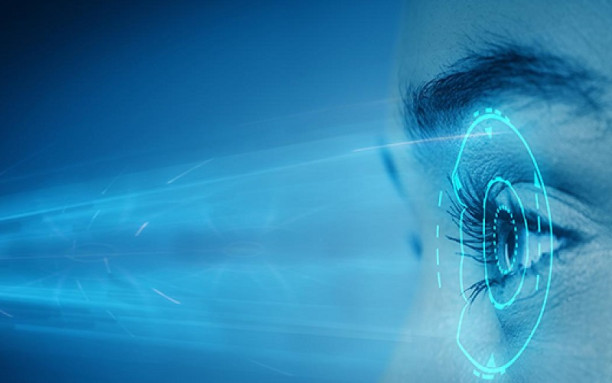
Ophthalmology
Ophthalmology is a branch of medicine dealing with the anatomy, physiology and diseases of the eye. All evaluations that purport to diagnose eye disease should be carried out by a physician. An ophthalmologist is a doctor of medicine who specializes in the diagnosis and treatment of disorders of the eye, in addition to diagnosing systemic disease that manifest in eye signs or symptoms. Since ophthalmologists perform operations on eyes, they are considered to be both surgical and medical specialists.
Opthamology Treatments:
Using state-of-the-art technology, Ophthalmology treatments in India cover numerous eye conditions, including cataracts, retinal diseases, glaucoma and other vision related disorders.
The most common treatments of Ophthalmology in India are:
- LASIK Surgery
- Vitrectomy
- Cataract
- INTACS
- Retinoblastoma
- Cornea
- Glaucoma
- Refractive Errors
- Occuloplasty
- Cornea
- IOL
- Ptosis Correction Surgery
- Pediatric Opthalmology
Other eye surgery
- Oculoplasty and Orbit
- Cornea Transplant
- Pterygium Removal Surgery
- Eye Muscle Surgery
- Diabetic Retinopathy
- Retinal Surgery
- Cornea and Refractive Surgery
Cataract - A cataract is a case of blurred vision which is caused by clouding of the normally clear lens. A person with cataract feels like he is looking through fogged up or frosty window. The problems become more obvious as the person ages and a drawback is that it cannot be treated with the help of optical or contact lenses. In such a case, a cataract surgery needs to be done where the affected lens is replaced with an artificial lens.
Cornea Transplant - Also known as corneal grafting, it is a surgery to restore the vision of a person who has a diseased or damaged cornea. There are two types of cornea transplant, i.e., when only a part of the cornea, known as lamellar keratoplasty, or the entire cornea is replaced also known as penetrating keratoplasty. The surgery is undertaken when the eyeglasses or contact lens are unable to provide a better vision.
Glaucoma - Glaucoma is a group of eye disorders that directly harm the optic nerve that connects the eye to the brain. It is also known as the silent thief of sight because most of its types cause no pain in the eye or show symptoms until there is a detectable vision loss. The surgical procedure for Glaucoma is one where the damaged ocular structures are repaired by stabilizing or reducing intraocular pressure. Eye drops aimed at lowering IOP (intraocular pressure) are the first option to treat this kind of disorder. In case that doesn’t work, surgery is opted to reduce the production of intraocular fluid.
Lasik- Laser Refraction - It is a surgical procedure performed to correct vision problems like hyperopia, myopia, and astigmatism. The surgery is usually painless where the doctor reshapes the cornea so that it accepts the light and be more focused on the retina for better vision.
Macular Degeneration Surgery - Macular degeneration is deterioration of the macula, the central part of the retina which is responsible for visual acuity. It is an age-related issue which is also the primary reason for the loss of vision. The health of the macula is very important for any visual task that requires to see fine details. Macular degeneration is diagnosed as dry macular degeneration & wet macular degeneration. Surgery prevents vision loss.
Phacoemulsification with IOL Implantation - It is a surgical procedure in which the lens fibers that form the cortex and nucleus of the cataract are removed, leaving the posterior epithelial capsule to support the new artificial intraocular lens (IOL). It also keeps the vitreous humor away from the anterior chamber.
Ptosis - Ptosis refers to the dropping of the upper eyelid over the eye. Some of the causes of ptosis are aging, trauma, or variations in medications. However, children and adults both can have ptosis. The same can be treated by ptosis surgery in which the doctor tightens the levator muscle or attach the eyelid to any other muscle that can lift the eyelid.
Retinal Detachment - Retinal detachment is a case in which the retina detaches or pulls away from a layer of blood vessels that provide the required nourishment and oxygen. Although it is painless, one can notice symptoms like blurred vision, floating objects, a slight shadow to name a few. Retinal detachment can be treated by pneumatic retinopexy, scleral buckle surgery, or vitrectomy.
Squint - Also known as strabismus, it is a condition in which the eyes do not align or look in the same direction. While one eye focuses at one point, the other turns upwards, downwards, inwards or outwards. Squint can be treated by doing eye exercises or wearing glasses. Surgical treatments are done on the extraocular muscle to realign the eyes.
Vitrectomy - This surgery is done for the removal of vitreous humor from the eye. During the surgery, the doctor will repair the retina, remove the scar tissue which is tearing the retina and causing problems in vision. Along with that, the doctor will remove the vitreous gel and replace it with saline water.
Vitrectomy + Retinal Detachment - Retinal detachment is a condition in which the retina detaches from its normal position and floats inside the eye, causing blindness. Doctors perform vitrectomy to reattach the retina, further sucking and removing the inner jelly. The scar tissue is removed by membranectomy and the retina is attached again by photocoagulation.
